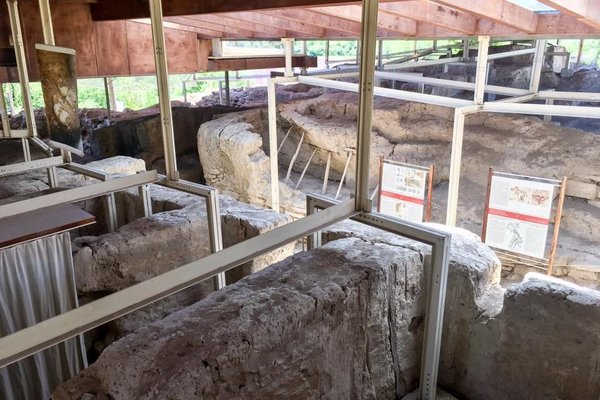Turkiye
Arslantepe Mound
Arslantepe Mound comprises the archaeological remains of a Late Chalcolithic palace, that testifies to elite life and the earliest forms of state administration.
It dates from the Uruk Period and shows the interaction between Eastern Anatolia and Mesopotamia. The “palace” is a large mud-brick complex of several buildings. The walls still have their white plaster and red and black wall paintings.
Community Perspective: The visitor circuit here goes directly through the corridors with walls. The red and black paintings may be covered by white curtains – ask a security guard to reveal them.
Site Info
Official Information
- Full Name
- Arslantepe Mound (ID: 1622)
- Country
- Turkiye
- Status
-
Inscribed 2021
Site history
History of Arslantepe Mound
- 2021: Advisory Body overruled
- After Referral advice
- 2021: Inscribed
- Inscribed
- Type
- Cultural
- Criteria
- iii
Links
- UNESCO
- whc.unesco.org
- Official
-
- turkishmuseums.com — Malatya Arslantepe Archaeological Site and Open Air Museum
- Related
-
- finestresullarte.info — Article based on the findings by Italian archaeologists
All Links
UNESCO.org
- whc.unesco.org — whc.unesco.org/
Official Website
- turkishmuseums.com — Malatya Arslantepe Archaeological Site and Open Air Museum
Related Resources
- finestresullarte.info — Article based on the findings by Italian archaeologists
News Article
- Oct. 22, 2024 hurriyetdailynews.com — Trace of fortress gate found in Arslantepe
Community Information
- Community Category
- Archaeological site: Prehistoric
Travel Information
South Central Turkey Hotspot
Recent Connections
-
Free entrance
-
Recorded cultural discoveries
The site has been known since the end o… -
Experimental Archaeology
An experimental 1:1 replica of an Arsla…
Connections of Arslantepe Mound
- Individual People
-
-
Gertrude Bell
"The site was visited by Gertrude Bell and Hansen van der Osten in the earliest part of the 20th century." (wiki) - see attached picture she took
-
- Geography
-
-
Tigris - Euphrates Basin
“The archaeological site of Arslantepe is situated in the Malatya Plain of eastern Turkey, approximately 12 kilometers from the right bank of the Euphrates River”
-
- History
-
-
Iron Age
Excavations began in the 1930s, conducted by a French mission headed by L. Delaporte. By investigating the upper part of the mound, Delaporte unearthed the remains of remarkable Iron Age buildings, among which the so-called neo-Assyrian palace (7th century BC) and the well-known Lions' Gate (9th-8th centuries BC). (Nomination Text, p. 37) -
Located in a Former Capital
Arslantepe was the capital of the autonomous Neo-Hittite kingdom of Melid/Malatya (Iron Age, 1100-712). (Nomination Text, p. 54) -
Assyrian Empire
- The long sequence of the site covers several millennia at least from the 6th millennium BC until the final destruction of the neo-Hittite town by Sargon II of Assyria in 712 BC. After a short neo-Assyrian occupation, the site was abandoned. (Executive summary, p. 2) -
Oldest Buildings
4000-3000 BC: The Arslantepe 4th millennium "palace" complex is an outstanding example of a new type of monumental public architecture. (Executive summary, p. 4) -
Hittites
testimonies of the Central Anatolian Hittites in the 2nd millennium BCE (AB ev) -
Ancient Anatolian cultures
For its Hittite remains -
Bronze Age
Considerable evidence also testifies to the Early Bronze Age period, most prominently identified by the Royal Tomb complex. (official description, Unesco website) -
Chalcolithic
"The most prominent and flourishing period of the site was in the Late Chalcolithic period, during which the so-called palace complex was constructed." (official description) -
Mesopotamia
Culturally, during the Early Bronze Age, Melid (= Arslantepe) was part of the "Northern regions of Greater Mesopotamia" functioning as a trade colony along the Euphrates River bringing raw materials to Sumer (Lower Mesopotamia).See en.wikipedia.org
-
Bronze Age Collapse
Arslantepe is a testimony of the Bronze Age Collapse, as recent investigations have brought to light an interesting transitional phase following the collapse of the Hittite Empire in Central Anatolia and preceding the foundation of the Neo-Hittite kingdom of Arslantepe/Melid. The Hittite citadel was probably destroyed after the collapse of the empire but, between the end of the 2nd and the beginning of the 1st millennia BC, a new huge town-wall was built. (Nomination Text, p. 31, 53-54)
-
- Architecture
-
-
Earth Architecture
The Arslantepe mud-brick architecture, due to its antiquity, advanced technology, and state of preservation, is also an outstanding example of a traditional building system representative of a millenarian culture shared by all Near Eastern communities. (...) It has been widely exposed and preserved in perfect and integral state, with the original mud-brick walls, mud plaster and floors, internal features and paintings (...). (Executive summary, p. 4)
-
- World Heritage Process
-
-
2 or more nominated criteria rejected by AB
Rejected: 2,4. Accepted: 3 -
Inscribed on a single criterion only
iii
-
- Human Activity
-
-
Residential burials
Common mud brick houses of rather small dimensions, made of one to three rooms, have been excavated. Proof has been found of burials underneath the floors or close to the houses with simple and poorly differentiated grave goods. (Nomination Text, p. 11-12) -
Ongoing Archaeological digs
The progressively expanding researches on the Hittite and Neo-Hittite period levels are in progress and can potentially bring to light new monuments of great historical and cultural value in the near future. (Executive summary, p. 4) -
Human Sacrifice
A "royal" cist grave was found on the margins of the tell, with very rich funerary gifts (...). On top of the cist grave, 4 adolescents were probably sacrificed, constituting one of the earliest evidences of a human sacrifice. (Nomination Text, p. 27) -
Man-made Terraces
"All structures belonging to this period were built on terraces along the slope, their different height levels determining the siting of buildings depending on their different functions and symbolic contexts" (AB ev)
-
- Constructions
-
-
Protective Shelters
The site has been protected with an innovative roofing system. (Nomination Text, p. 56) -
Gates depicting Lions
Excavations (...) unearthed the remains of remarkable Iron Age buildings, among which (...) the well-known Lions' Gate (9th-8th centuries BC). The gate was flanked on either side by two lion statues carved from stone blocks with high relief bodies and round heads, which probably gave the name to the site (Arslan Tepe, namely, "Lions ' Hill") (...). (Nomination Text, p. 37) -
Cemeteries
In the Byzantine/Medieval time, the site was used mainly as a cemetery. (Executive summary, p. 2) -
Tell
Arslantepe Mound is a 30-metre-tall archaeological tell located in the Malatya plain, 12 km south-west of the Euphrates River. (official description, Unesco website) -
Tombs
At the end of Period VIB1 (3100-3000 BC), a "royal" cist grave was found on the margins of the tell, with very rich funerary gifts, among which 75 metal objects, weapons, tools, vessels and jewellery in copper, silver, gold and various alloys.See whc.unesco.org
-
- Timeline
-
-
Built in the 4th millennium BC
Period VIA, Late Chalcolithic 5, 3400–3100 BCE: "The largest structure identified in the excavation of this Late Chalcolithic period is the so-called “public palace"" (AB ev)
-
- WHS Hotspots
-
-
South Central Turkey Hotspot
2 hour (mini)bus drive
-
- Science and Technology
-
-
Recorded cultural discoveries
The site has been known since the end of the 19th century. In 1895, David Hogarth published a bas-relief of a lion hunt from "Arslan Tepe" which had been discovered in May 1894 by an inhabitant of the neighboring village while he was looking for building stones. Three photographs of bas-reliefs discovered in Malatya (...) were sent to the Academy of Inscriptions in 1907 and were published in 1909. From 1930 to 1939, it was excavated by a French team led by Louis Joseph Delaporte, which mainly identifies neo-Hittite levels.See fr.wikipedia.org
-
Experimental Archaeology
An experimental 1:1 replica of an Arslantepe Early Bronze Age mud-brick house, has (...) been built in 2010 in the entrance area. The original aim of reconstructing this house was to investigate, and at the same time, exhibit the old mud-brick architecture techniques, and show to local modern inhabitants how their traditional houses have not changed for millennia. This should further help bridge the past with the present as well as being a very effective educational tool for the preservation of traditional cultural heritage. (Nomination text, p. 106) -
Archaeological potential
The progressively expanding researches on the Hittite and Neo-Hittite period levels are in progress and can potentially bring to light new monuments of great historical and cultural value in the near future. (Executive summary, p. 4)
-
- Visiting conditions
News
- hurriyetdailynews.com 10/22/2024
- Trace of fortress gate found in Ar…
Recent Visitors
Visitors of Arslantepe Mound
- Alexander Lehmann
- A. Mehmet Haksever
- Atila Ege
- bergecn
- Bin
- Can SARICA
- Cheryl
- christof
- Clyde
- Els Slots
- Eva Kisgyorgy
- Fan Yibo
- henryjiao18
- Jarek Pokrzywnicki
- Jawnbeary
- Knut
- Maciej Gil
- marcel staron
- Milan Jirasek
- nan
- Nihal Ege
- Patrik
- Philipp Leu
- Philipp Peterer
- Rafał Kałczuga
- Roger Ourset
- Roman Bruehwiler
- Stanislaw Warwas
- Szucs Tamas
- Tarquinio_Superbo
- Thomas Buechler
- Thomas van der Walt
- Walter
- Wojciech Fedoruk
- Yevhen Ivanovych
- Zoe
- Zoë Sheng
Community Reviews
Show full reviews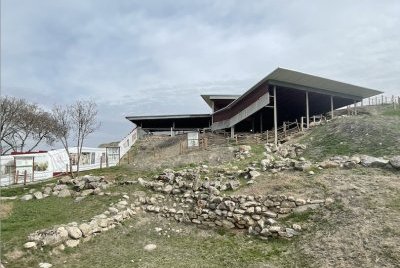
I visited in Spring 2025. There are extensive renovations going on currently, so I would estimate only around 30% of the site is available to view currently. In addition, the Malatya archeology museum is also closed, so you can't go to see the artifacts that were discovered at Arslantepe. I am not sure when both the museum and the site will be fully open again.
To get to Arslantepe, I used public transportation. Good news -- as of recently, you can tap on with any contactless credit card, so you don't need to buy a pre-paid Malatya card! I used the Moovit app to plan my trip but there may be a better option out there.
When I arrived, I was given the option to use an audio guide, which is available in English, Italian, Turkish, and German. The audio signs were not marked in any clear pattern and I had a hard time knowing when I was supposed to be using it. This might have something to do with so many portions of the site undergoing renovations. There are also signs in Turkish, English, and Italian you can read that explain the history of the site. The rock art was not covered with any curtains while I was there, so it was easy to spot. I was the only person there.
Overall, I can see why the site is important enough to be a WHS. However, the signage was a bit confusing and I couldn't view …
Keep reading 0 comments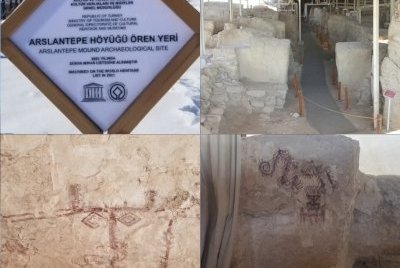
*½ stars.
Turkey's worst entry into the world heritage list by miles (I think Xanthos gets a bad rep and should be a collection of sites anyway), it's not even easy to visit. The location is in the suburbs of Malatya and we are talking farm community, with odd roads and not even a proper parking lot. So I stopped at what had a "no parking" sign anyway just in front of the site. A 100m walk to the entrance and you are greeted by a guard. There are opening hours on a small sign but it seems one can only enter with a custodian, and they take turns. Maybe this isn't the case in high season but it makes sense because one enters a digsite and touching/damaging the walls is done easily. I had to wait for a couple of people to come out first and then the guard let me in. There are excellent displays as you make your way into the digsite, in Turkish, English and ITALIAN?!
There are layers of history here, the building isn't really recognizable as a palace, and all findings are taken to the nearby Malatya museum so you should make time for both. Just seeing the site is rubbish, but my rating is for the site alone. The remaining bits are shards of pottery and some sort of plumbing, and the highlight was clearly the "motif" as he said, the wall paintings. Usually they are roped off but he let …
Keep reading 0 comments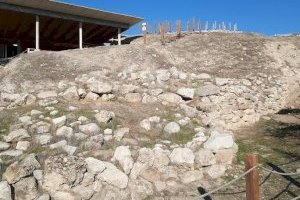
Anatolia is the go to place for early human settlements. The latest addition by the Turks in this area is Arslantepe Mound in 2021. What you will find is a hill with a "palace". It's all based on mud bricks and excavations are still ongoing. Seeing the size of the hill (tell), I would assume more buildings to be unearthed in the next decade or so.
There is a walkway across the public parts of the ruin. It's not huge, but allows you to explore the site. They did put up some signs which helps shed some light on the site.
The single greatest feature of the site are the rock drawings. I had seen them on Clyde's and Stanislaw's reviews. But they were nowhere to be seen when I visited. I was about to give up when Clyde via whatsapp let me know, that they are protected via curtains. You have to ask the guard to remove them. He did and the rock art is stunning, especially as it's displayed in situ rather than a museum.
The site was originally referred. I would argue that there is no overall reason against inscription and that the site belongs on the list. Reason I could see for a referral is that given the ongoing excavations, inscription could have taken place later to get a full picture of the site. I could also see approaching the Malatya area as a whole and documenting the human settlement of the area …
Keep reading 0 comments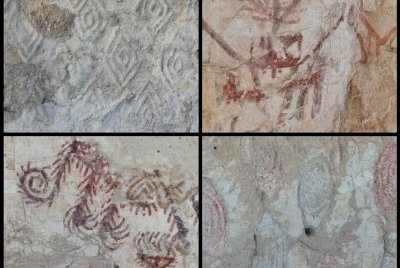
I visited this WHS in Spring 2021. If you're travelling by car between Goreme National Park and Nemrut Dagi, the Arslantepe Mound near Malatya is a rather convenient stopover point. Knowing that this site was up for inscription in Summer 2021, I made an extra effort to visit the Arslantepe Mound which shows the interaction between Eastern Anatolia and Mesopotamia.
The Arslantepe Mound is a Late Hittite large mud-brick complex of several buildings. Unlike Gobeklitepe and Catalhoyuk, which have circular elevated boardwalks around and above the sites at quite a distance, Arslantepe (at least when I visited) had wooden boardwalks and textile carpets which go through the corridors with walls which still have visible sections with white plaster, and red and black wall paintings. This is quite impressive when considering that they were done around 3350-3000 BC. A very kind security guard revealed the red and black paintings which were covered by white curtains. Apart from the peculiar wall paintings, another highlight were the decorative coloured geometric engravings, technically described as lozenge-shaped stamps applied to wet plaster. Several detailed information boards shed light on what you're seeing during your visit. In front of the site's entrance, there's also a reconstruction of an Early Bronze Age I Arslantepe House (2900-2800 BC).
Arslantepe (Lion Hill), also known as Melid, was an ancient city on the Tohma River, a tributary of the upper Euphrates rising in the Taurus Mountains. It is dubbed as Arslantepe, the origins of power, due to the …
Keep reading 0 comments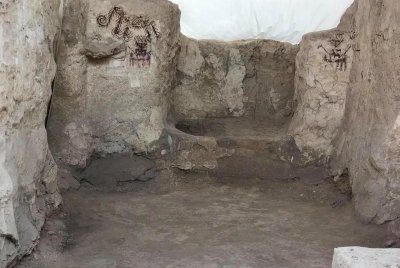
Visited November 2020
Turkey has already the oldest proto-urban settlement (Neolithic Site of Çatalhöyük) and the oldest temple/sacred site (Göbekli Tepe) inscribed on World Heritage List, and probably soon the oldest palace or rather administrative and residential complex will find its place on the List – Archaeological Site of Arslantepe. By writing ‘oldest’ I mean the oldest and most remarkable found until now.
I’ve never heard about Arlsantepe before it was nominated for 2020; but reading the short description on Unesco site, I realized that this one is widely known as Melid, a late or neo-Hittite settlement located in Central Anatolia, far from any other Turkish heritage sites already inscribed. When you look at the map, it seems not so distant from Nemrut Dağı… But it only seems… And without a car, it takes hours and hours and multiple connections to get from one to the other. The closed place to visit for WH chasers is Harput, in Elaziğ, on TL from 2018.
So why do we have two different names for the same site? Melid or Malidiya in Hittite language was the name of the Neo-Hittite city established after the collapse of Hattuşa (13th/12th century B.C.). After the invasion of the Sea People, they (Hittites) moved south and south-east and occupied the territories already developed by previous inhabitants (Ishuwa for Hittites), like Carchemish, Zinchirli or today’s Malatya region. And this later place they called Malidiya. Let’s get back to 20th century: during the excavations works the …
Keep reading 0 comments
